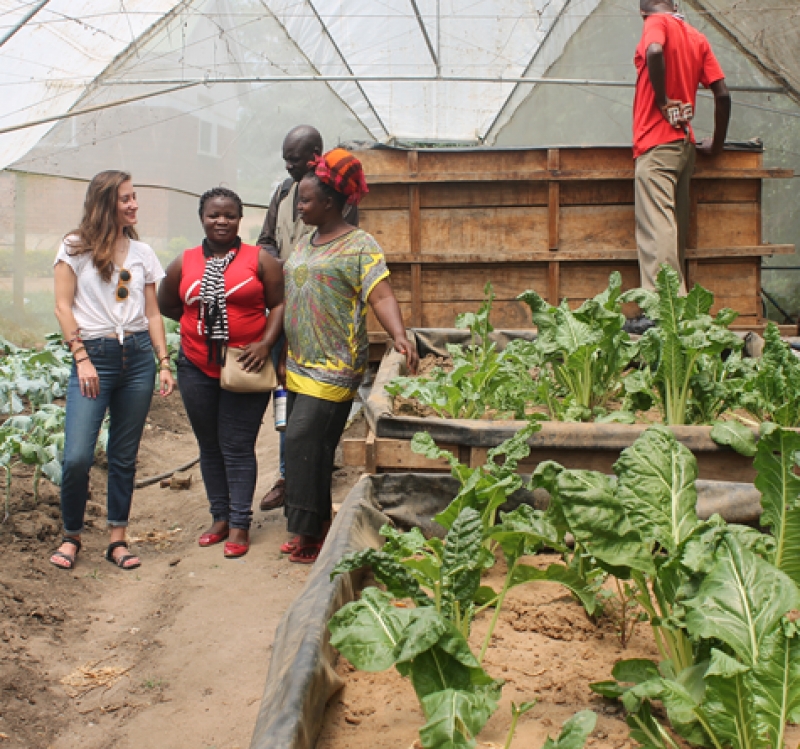
The Plant-Powered Tank Turning Ugandans into Fish Farmers
Water Governance Institute’s Aquaponics system is helping households generate food and income — and bringing nutritious fish to a region that needs it.
In Hoima, Uganda, fish is hard to come by. Demand for the nutritious meat is high, especially among families with growing children and elderly people in their household. Fish fetch a good price at the market — and fish farming can be a profitable business.
Ms. Proscovia Rujumba recognized the opportunity and set out to farm fish in Hoima. Initially, she didn’t do as well as she’d hoped: The large, outdoor earthen pond she used to breed and grow tilapia and catfish failed to produce enough fish for her to sell.
Water Governance Institute, a Ugandan social enterprise, heard about Proscovia’s struggles though the Hoima Hoimdistrict local government. They suggested she install an innovative tank system called Aquaponics to replace the pond and increase the farm’s production.
Proscovia was skeptical at first — she had never seen fish raised outside of ponds, streams, or lakes. But Henry Bazira, the executive director of Water Governance Institute, and his team persuaded her to give Aquaponics a chance. Soon after, Water Governance Institute set up a unit in her house.
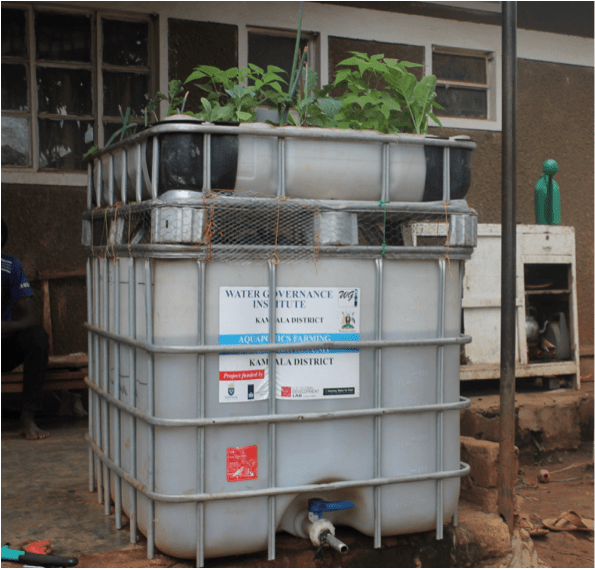
WHAT IS THE AQUAPONICS SYSTEM?
The Aquaponics system consists of two parts: A grow-bed where crops grow in a fertile sand-gravel mixture and a tank beneath the grow-bed for the fish (see above). The two parts depend on and complement each other — the fish tank provides water and organic nutrients to the plants in the grow-bed, while the plants clean the water before it returns to the fish tank.
Fish farmers can install the system inside of or next to their homes, saving space and making it easy for people with physical constraints to access and operate. An Aquaponics system saves water too, by recycling water between its two parts.
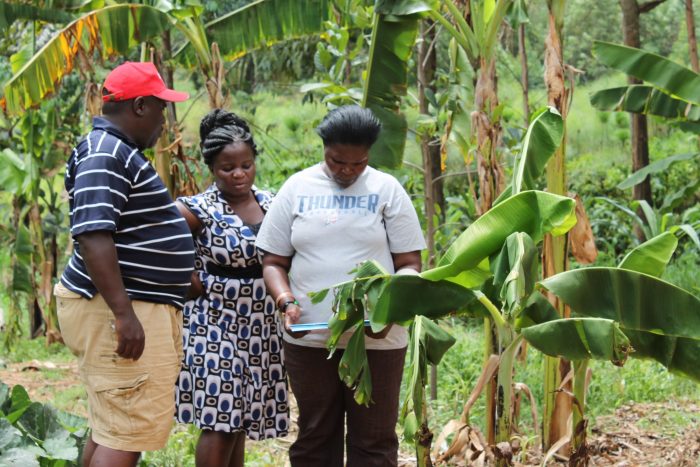
“We bring fresh fish right into the home,” says Bazira. “The Aquaponics system makes fish farming accessible for anyone who wants to earn an income or who wants to put a healthy and nutritious meal on the dinner table for the family.”
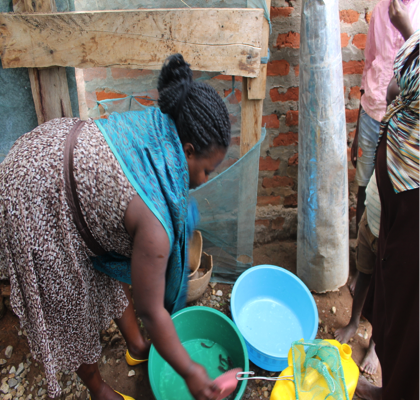
Aisha, a WGI staffer, assists Proscovia in sorting catfish fingerlings for stocking in the Aquaponics unit. 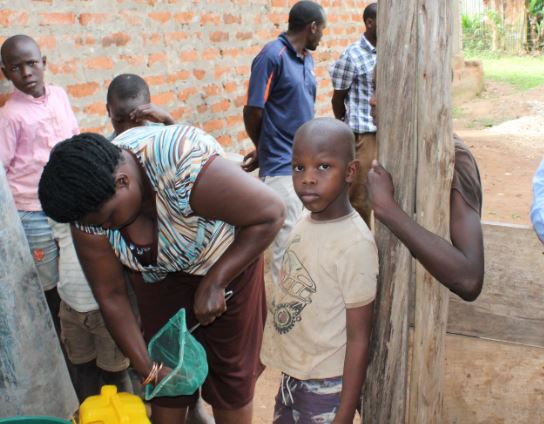
Proscovia prepares to stock fish fingerlings in her Aquaponics unit.
Within three weeks, Proscovia was convinced the system worked. The catfish and plants were growing right before her eyes!
HARD WORK PAYS OFF
By itself, a working system didn’t guarantee success. Proscovia had to learn how to operate and maintain it, and she faced several challenges — especially with the water recycling. When the water didn’t properly move from one part to another, the water quality suffered. A musty smell started emanating from the fish tank, and two of her small fingerling fish died. But Water Governance Institute staff came to her aid, walking her through the maintenance steps and showing her how to prevent future problems.
With support, skills, and determination, Proscovia’s fish farm flourished. She was able to produce one hundred and ninety-seven catfish weighing around 1–1.5 kilograms each, along with produce from the grow-bed. She ate some of the catfish and tomatoes at home and took some to market, earning USD 612 from her work.

Soon Proscovia’s neighbors began visiting, excited by the Aquaponics technology and her success. She realized that the system could work for her friends and neighbors too.
SPREADING THE WORD
Proscovia is now a successful fish farmer and a local promoter of the Aquaponics system, sharing her success and answering familiar, skeptical questions about whether this system really works. She even spoke about her experience on a local FM radio station, telling people throughout the region why they should try Aquaponics.
Water Governance Institute learned from Proscovia’s experience as well: They resolved to put greater focus on maintenance training during the system installation. That training will empower each customer with the knowledge and expertise to keep their system running smoothly — generating food and income for a long time.
Together, Water Governance Institute and small entrepreneurs like Proscovia are giving women and small farmers all over Uganda the ability to feed their families and earn a living by farming nutritious, homegrown fish.
Support Water Governance Institute’s work to curb nutrition deficiencies and poverty by sharing this story. To learn more about Aquaponics and our work, contact our office by email (watergovinst@gmail.com).








